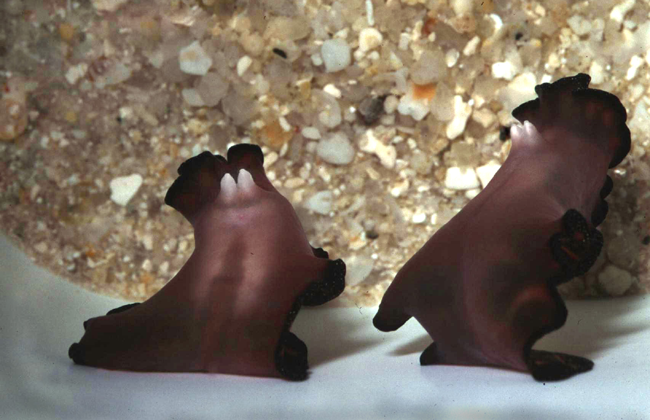"Your Inner Fish" was a video series about evolution and how long it has taken for humans to evolve on this planet. We first watched part 1, which talks about the transition from water to land. We learned about Tiktaalik, a transitional organism that scientists think is the ancestor of all tetrapods. It also showed how the human hand evolved and its relation to structures in other tetrapods. This links back to the evolution unit and homologous structures because our palms & fingers are descended from Tiktaalik's flipper-hands.
The second video was called "Your Inner Reptile", which was about synapsids and the transition from ancient reptiles to mammals. We learned about the ancestors of mammals and how their lifestyle involved living underground, hunting/foraging during night, hiding from dinosaurs, using whiskers as a sensory organ. It also explained the master gene "EDA" which controls all the integumentary organs including hair, nails, and glands. This relates to Unit 5 because the gene EDA causes proteins to be produced and determines the location of growth for many organs.
Q7. What was the "needle in the haystack" that they were looking for in the Canadian fossils? Why was it important?
They were looking for a transitional tetrapod fossil. The organism would have to fill the gap between lobe-finned fish and the early amphibian Icthyostega. It should have an about equal amount of fish and tetrapod characteristics to be the "needle" they are looking for. The reason it is so hard to find is because the chance of an organism from almost 400 million years ago fossilizing is very low and even if you find a specimen, the chance of it being well-preserved is miniscule. Plus, the weather is pretty harsh and they don't have much time. However, you could consider it easy to find because the team was able to narrow the location down to a relatively small area.
An extremely well fossilized Tiktaalik specimen
https://upload.wikimedia.org/wikipedia/commons/f/fa/Tiktaalik_Chicago.JPG
Q24. How and why did hair first evolve?
We think hair first evolved as a sensory organ in early mammals. They would have been similar to modern whiskers, except the rest of the body was just covered in bare skin or scales. But that makes me wonder what did they actually have on the rest of their body? Did they just have bare skin or did they have scales? If they had bare skin, then did mutations in the EDA gene cause whiskers to spread through the rest of their body? If they had scales, then wouldn't the scales have evolved into hairs because they are both keratinous structures? Although both ideas may involve EDA, the first one says that whiskers spread through the body and became hair, while the second posits that the body scales evolved into modern fur. If this were the case, then wouldn't the theory that early synapsids had whiskers become irrelevant to the development of modern hair?
